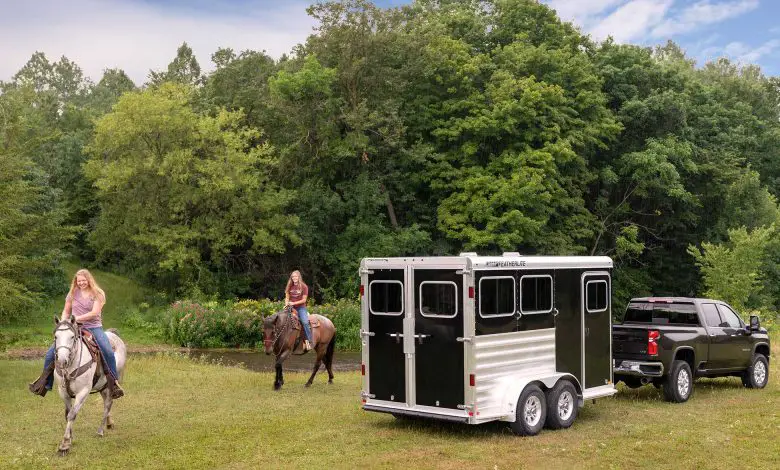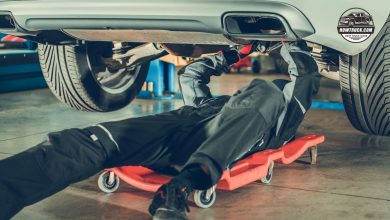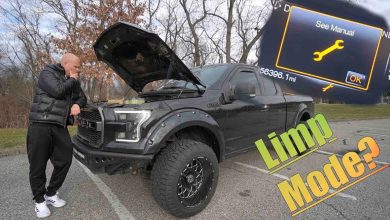Can a Ford F150 Pull a Horse Trailer

The three-horse trailer can be towed fully loaded up to 12,200 pounds. It can carry a payload of 3,180 pounds in the truck bed since the top-of-the-line engine costs an additional $1,995.
The F-150 is still the king of maximum payload thanks to its mid-level V-8 engine. With a 5.0-liter engine that makes 385 horsepower and 387 pound-feet of torque, the truck can haul 3,300 pounds. It has a maximum towing capacity of 11,100 pounds.
Furthermore, the smaller and cheaper EcoBoost engine has made its mark on the F-150 family. The 2.7-liter turbocharged V-6 generates three hundred and seventy-five pound-feet of torque.
Can A Ford F150 Pull A Horse Trailer
Can a Ford F150 Pull a Horse Trailer? Yes, the F150 has enough towing capacity to pull a horse trailer. In comparison, the approximate weight of a horse trailer ranges from 2500-4500lbs, while the towing capacity of the Ford F150 is between 7500 and 13500 pounds. However, even though the weight of the trailer differs, overall, it still makes up enough Ford F150 to pull.

The right truck must be able to tow a horse trailer easily. A vehicle such as the Ford F150 can tow a trailer with a single or two horses.
For proper towing, many tools are necessary, and you need to gather them all. You will need an emergency roadside kit and the hitch set for this. Triangles, jumper cables, flashlights, duct tape, hooks, ropes, clippers, cables, chains, and pliers are all necessary for roadside assistance.
Every step requires care and precaution. Use all the tools carefully to avoid damaging your vehicle, trailer, and, most importantly yourself.
How big a trailer ford f150 can tow?
With the right towing package or trim level, the F-150 can tow up to 13,200 pounds. Many of them (but not all) F150 models can safely tow a camper that weighs under 6,000 pounds when towing a travel trailer.
What kind of gooseneck horse trailer can Ford F150 pull?
Short bed pickups can tow gooseneck horse trailers. According to the manufacturer, Ford’s 2020 F-150 offers a 3.5L EcoBoost twin-turbo V6 engine that can tow up to 14,000 pounds. Too short a truck bed can cause the gooseneck’s nose to hit the truck cab when turning. A ball/hitch extension or offset can prevent this issue on trucks with shorter beds.
How to tow a horse trailer with Ford F150
A Ford F150 can easily tow a horse trailer, but it requires efficient and careful maneuvering. Its weight is another important consideration. A correct match between your truck and trailer can help you reach the goal. Put on the gloves and gather the tools you need.
Follow these steps to tow a horse trailer with Ford F150:
1. Measure the trailer’s tongue weight
When your towing vehicle pulls the trailer, the tongue weight is that weight it experiences from its backside. When the tongue weight of the trailer pushes down on the back of the truck, it usually looks like it’s lowering. Overhanging the back of the tow truck, it extends from the trailer.
The weight can cause your vehicle to lose control if it is too heavy. Adding pressure and weight to the truck’s backside can lift the front of the truck. In this case, no matter how much your F150 can tow, you can’t tow the trailer.
2. Pick the perfect hitch
Connecting a trailer to a vehicle is called hitching. A trailer’s GTWR and hitch load capacity must be considered. The hitch will fail if you overload it during the whole process of towing.
The hitch-set you choose depends on the weight-holding capability of the hitch. Horse trailers are better suited to tow hitches with frame-mounted receivers. Their bolted-ball mount slips into the receiver and is connected to a steel tube. It is almost a 2 to 2.5-inch ball.
3. Ford F150’s correct positioning
Ensure that the truck’s rear tires are in front of the trailer. The bumper of the truck and the trailer’s center must face each other when lining up both. You will be able to hitch up easier if you align the ball under the coupler.
4. Tow hitch connections
Before you begin, you should understand the hitch’s components and how they are attached.
The hitch receiver is the part of the vehicle that connects to the hitch. An attachment ball is attached to the tube.
The receiver and ball mounts must be slid into the receiver. There are many types of ball mounts on the market. These attach to the truck’s ball.-You connect the hitch ball to the trailer using the coupler.
Cables and safety chains must also be attached to the trailer and hitch of the F150. While traveling, there is a possibility of the balls or chains disengaging, so you need to be very careful.
Braking the trailer requires plugging the trailer’s wiring harness containing the brake lights and signals into the back bumper. On your f150, you need a controller to control the brakes on the trailer.
5. Tow the trailer and secure it to the truck
The ball and coupler should be properly attached, along with cables and safety chains, so that the connections are properly hitched up and secured. The ball should be fastened to the coupler not to disengage when riding the truck. Place the ball exactly sometimes by applying pressure. Before driving on a highway or heavy traffic road, ensure that your trailer lights and brakes are properly installed.
Read also;




